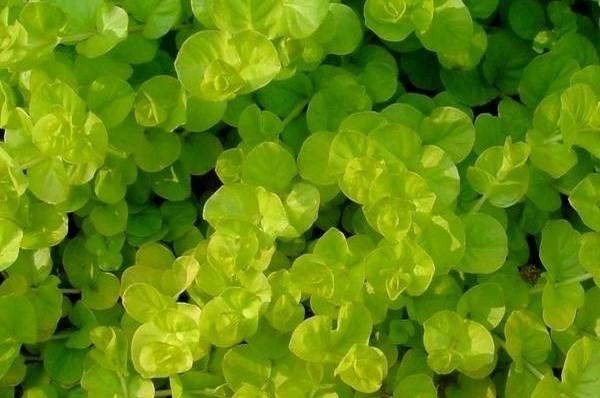What is the origin of nummular lysimachus?
To discover
Gardening: what to plant, sow or harvest in April?
Plants from A to Z: all our gardening tips
Latin name
:
Lysimachia nummularia.
Family
: Primulaceae (androsace, cyclamen, chickweed, primrose…).
What are the main
types
of lysimachus?
The genus includes about 150 species including:
Lysimachia vulgaris
, common lysimachus,
Lysimachia congestiflora
, yellow flowered ground cover,
Lysimachia barystachis
, with straight white spikes,
Lysimachia fortunei
, erect, but small in size, with white flowers,
Lysimachia ciliata
'Firecracker', with beautiful dark foliage
Lysimachia nummularia
'Aurea' or 'Goldilocks', the golden lysimachus, with its carpet of anise-green yellow leaves, is undoubtedly the most cultivated golden plant on the market, but its yellow flowering, tone on tone, is hardly visible.
What uses of nummular lysimachus?
In the garden, the lysimachus nummulaire, also known under the name of grass with the ecus, particularly creeping, is able to fill beautiful surfaces, as well at the foot of perennials or shrubs as in a pot or a planter used in suspension.
Excellent for covering the banks and edges of a pond, it supports immersion up to 5 or 10 cm, as long as its leaves reach the surface.
Read also: Ice Saints 2021: watch out for frosts
Where is nummular lysimachus found?
Ecus grass is distributed in Europe in areas with a sub-oceanic climate.
In France, it is found in the wild, often subservient to wetlands, sometimes protected in certain regions.
How to recognize nummular lysimachus?
The nummular lysimachus is a plant 10 to 20 cm high, but most often very low, because it is completely creeping. Its slender stems are lying on the earth, rooting, able to take root at every node that comes into contact with the earth. They are also densely leafy: the limbo, orbicular and ribbed about the size of a coin, hence its name of herb with crowns, are shortly petiolate and opposite. The latter line up very regularly on either side of the more or less branched stem. The nummular bears its flowers barely above the foliage, facing upwards. The yellow star-shaped corollas about 2 cm wide are clearly visible, nestled in the emerald green foliage.They are pollinated by insects and produce a small round capsule that encloses the seeds.
Read the file: Discover our file on perennials: all our advice
When does nummular lysimachus bloom?
Flowers appear from June to August from the leaf axils.
Lysimachus is very hardy, with tolerance to medium drought.
How to cultivate lysimachus?
Difficulty level:
Very easy.
Soil
:
Lysimachia nummularia
particularly likes clay soil, even heavy, humus or not, which stays at least a little cool all year round, but which can be humid, even temporarily flooded.
Exposure:
Light shade, partial shade or full sun.
The golden form is susceptible to sunburn and is brighter in shade.
Multiplication
: It is done simply by divisions (except during the flowering period) which are watered once or twice after transplanting or by cuttings from rooted stems.
Seeds can also be harvested for sowing.
Cultivation management
:
Lysimachia nummularia
produces beautiful leafy expanses, on the edge, or between shrubs or taller perennials, which provide it with beneficial shade in summer.
It is planted in spring or fall
.
It will be weeded of its weeds during the first year of growth in order to be able to settle for a homogeneous ground cover.
Crown grass is not suitable for the rock garden, because it stifles too small plants.
On the other hand,
it is an excellent shade or suspension planter
, long perennial as long as it is regularly fed and watered.
It withstands heat up to 25 ° C.
Read also: How to create a hanging garden?
Finally, it can be used as
an aquarium plant
, making very beautiful herbaria by renewing its stems by cuttings each time they protrude from the surface.
Diseases and parasites
: Attacks by slugs, very fond of young shoots.
Sheet written by Jean-Marie Souil, SNHF, Perennial plants section

